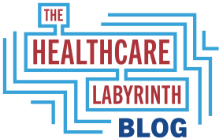This blog starts a four-part series on Health Plan Economics. In this series I plan on simply laying out some important trends in different lines of business and some of the impacts from a healthcare economics standpoint. Here is my plan, subject to change of course based on breaking news:
April 25 – Medicare Advantage and Rumors Of Humana’s acquisition by Cigna
April 29 – How The Lapse Of Premium Subsidies Could Hurt The Exchange’s Relatively Stable Finances
May 2 – How Falling Medicaid Enrollment is Impacting Health Plans and Providers Alike
May 6 – Other Healthcare Trends And Their Economic Impacts On Plans
—
Part 1 – Medicare Advantage and New Rumors of Cigna-Humana Combination
I had not thought much about the failed Cigna-Humana combination since it fell apart late last year. But I was intrigued by Jeffries analyst who just reported that the math now may work again for Cigna’s acquisition of Humana. He is right and it sparked some healthcare economist churning in my brain. Let me explain.
What is happening with Humana?
Let’s talk about what is happening at Humana. Great credit goes to retiring CEO Bruce Brossard for building a fabulous company. Broussard chose to focus mostly on Medicare Advantage (MA) due to its huge revenue, high margin potential, and because America is aging. Over any reasonable time horizon, it is hard to argue that MA is not the place to be. While businesses always have their execution challenges, Brousard has successfully grown enrollment, revenue, and margin. He has also executed well over the years on Star. Few can say this from the big plans. As such, Humana enrollees tend to be very satisfied.
But the MA industry generally and Humana in particular are facing challenges. Broussard is fully committed to the major concentration on MA and it has rewarded him over the years. But recent trends in the industry are hurting Humana. This caused its stock to plummet after some poor Q4 2023 news as well as continuing challenges going into 2024. These trends tend to be external to Humana itself in many ways. They are:
- Very tight rate increases
- A return of utilization and inflation post pandemic
- A risk adjustment data validation (RADV) rule that oversteps common sense
- An equally foolish rule that reins in the use of prior authorization (PA)
- A complex and stringent Star program, although Humana has always met the challenge
- A general anti-MA sentiment on Capitol Hill due to provider and think tank organizations mischaracterizing many aspects of the growth of MA (although I admit some reform is needed).
Now, in a number of blogs, I have argued that MA will survive but will have to adjust. It will still be the place to be. Benefits will be realigned and margins will return. The financial health of Humana and others will turn around. It is unfortunate, though, that consumers get hurt by all this government miscalculation.
At the same time, given the changing political sentiment (robust support at the public relations level but attacks on the policy detail side), might Humana be better off within a larger, diversified organization? Perhaps the time has come. The pressures on MA will not lighten. We will continue to see providers mount a policy attack against MA growth and see contracting payments because of Medicare solvency and overpayment concerns.
In comes Cigna.
So in comes Cigna. Now it is true that CEO David Cordani is in the process of shedding his MA line of business to Health Care Service Corporation (HCSC). So why would he jump back into it with a merger? Cigna’s 600,000 MA lives is actually among the biggest (7th largest in the nation). But Cigna’s MA business has always struggled to get to the operational and financial performance you would want of an MA line. Cigna’s Star ratings have been low, its enrollment execution poor, and, therefore, its financial performance mixed. Cordani just didn’t think he wanted to make the investment in technology, personnel, and more that is needed to get MA to operate on all cylinders.
I don’t necessarily agree, but in some ways the recent MA struggles show Cordani to be a shrewd operator. He wants to invest more in the unregulated services area of master health plan companies and serve MA plans there. Cordani has invested a great deal in this service subsidiary, Evernorth. In many ways it is modeled after United HealthGroup’s Optum unit. Over the years, Cigna has acquired various service-related assets, including Big 3 pharmacy benefits manager (PBM) Express Scripts, medical cost management entities, and more. Over the years, Evernorth has grown considerably and is responsible for a large share of consolidated Cigna’s profit. United is a financial powerhouse due to Optum and so could Cigna be. Makes sense. For Cordani, this seemed more lucrative than investing in MA given some of the trends. I would note that elevance Health also is busy building out its Carelon services subsidiary. And CVS Health also is significantly diversified as both a plan through Aetna and various service businesses.
What do I mean by unregulated services area or entity?
Most lines of business have what is known as a minimum medical loss ratio (MLR) requirement, which mandates that a certain percentage of insurance premiums be spent on medical costs or expense. Because there is administrative costs as well, this naturally fixes or compresses the amount of margin an insurer makes. I peg the percentage margin on an ongoing basis at 4 to 6%, but in certain times it can drop below that.
In the unregulated service area, there is no such constraint. The plan pays a service entity to perform a function and it is up to the plan to live within the minimum MLR not the service entity. So margins on the service entity side can be larger.
So why would Cigna and Cordani want MA now?
It likely is the fact that Cordani always wanted Humana but he just could not make the numbers work at the time because Humana’s stock was still too high. He didn’t want to make the investment needed in Cigna’s MA itself, but if it came pre-packaged as Humana’s best practices and millions of lives it would make sense. His shedding of the 600,000 lives would likely have been needed anyway to meet regulatory scrutiny. So it could have been a wait-and-see game. Cordani got to prioritize his service unit investment and could sit tight to see if the deal on Humana became financially viable. With the lower Humana stock price and the likelihood it will continue to be deflated for some time, the math works according to Jeffries.
What is in it for Humana?
Humana investors now may like the idea better. With lower stock prices, they now see that MA, while profitable over the long term and a good investment, has its challenges. It may be better to hedge some of these risks in a larger and more diversified organization. The power of MA will be there over time, but investors are cushioned a bit from the challenges of MA policy changes coming up.
A combined organization would be a powerhouse.
Combining the two organizations would create a financial powerhouse like United. Cigna has a great commercial insurance portfolio. Humana has the second-largest Medicare one and is having great success growing its Medicaid line (which too will be crucial with a drive toward Medicare-Medicaid integration). And while Humana had some service entities (principally provider groups and long-term care entities), they had more limited opportunities to leverage service entities within one consolidated organization. As one example, Humana has a much smaller captive PBM. Cigna’s Express Scripts has much broader capabilities.
In summary, a deal would complete the picture for Cigna investors and insulate Humana investors from a very good line of business but one that has increasing risk.
But some caution is needed. Intercompany transfers could be scrutinized.
While the move looks right, at the same time there are some warning clouds out there. United’s Change Healthcare cyberattack will mean new scrutiny on the size and scope of vertically-integrated entities. United will be looked at and Cigna could as well if a deal with Humana happens. The truth is it may be looked at anyway. And the regulatory and Capitol Hill investigations will go well beyond cyber security.
More important, federal regulators and lawmakers will begin to look at the complex and opaque deals that happen behind the scenes in the form of intercompany transfers between an insurer and a service entity because the monies ultimately roll up to a master parent company. For example, lawmakers and regulators are already looking at certain use cases about how insurers and their own PBMs contract with each other. Do they inflate prices to consumers and the system, while allowing parent companies to circumvent the minimum MLR mandate and drive higher earnings in the unregulated world? Health plans, too, put related provider groups at partial or full risk. Some argue this gets around the minimum MLR. Incentives are needed for providers to perform. But should there be greater scrutiny of such arrangements between affiliated entities to ensure they are truly arm’s length? Similar arrangements can occur with other service entities and does the arm’s-length standard need to be looked at here?
In sum, while master health plan companies are smart to have multiple lines of business as well as service organizations, the world here could change. Over time, new regulations could impact this unfettered world. How long will it be the way it is? It is hard to say. First, lawmakers and regulators would have to understand the complexity of all these various and sundry transactions. That is a huge and long task. Second, then they would have to craft solutions without undermining the system itself – and we know poorly crafted solutions do this often? More time. Third, they would have to go through rule-making, implement, monitor, and fine or sue those who are non-compliant. Alas, more time. All told, in the world of government, this is a lifetime. But count on some reforms soon to begin to chip away at the arrangements. And that has to be in health plans’ minds as they think through mergers, acquisitions, growth, and more.
Whether a purchase of Humana by Cigna comes to pass is anyone’s guess. Any number of things could derail such a combination if it is rekindled — personalities, internal health plan priorities, stock price moves, press headlines on cyber security, regulators pushing back on acquisitions, movement of certain restrictions on Capitol Hill, and so much more. So while it might make sense, it is by no means a certainty. But I hope this use case — whether it comes to pass or not — gives you a feel for the vast interplay of organizations within healthcare companies and the economics behind it.
Additional reading:
https://www.modernhealthcare.com/mergers-acquisitions/cigna-humana-deal-jeffries
#healthplans #cigna #humana #medicareadvantage #minimummlr #mlr
— Marc S. Ryan





